Chinese Plum Sauce with Wild Plums
June 14, 2013 | Updated October 29, 2020
As an Amazon Associate I earn from qualifying purchases.
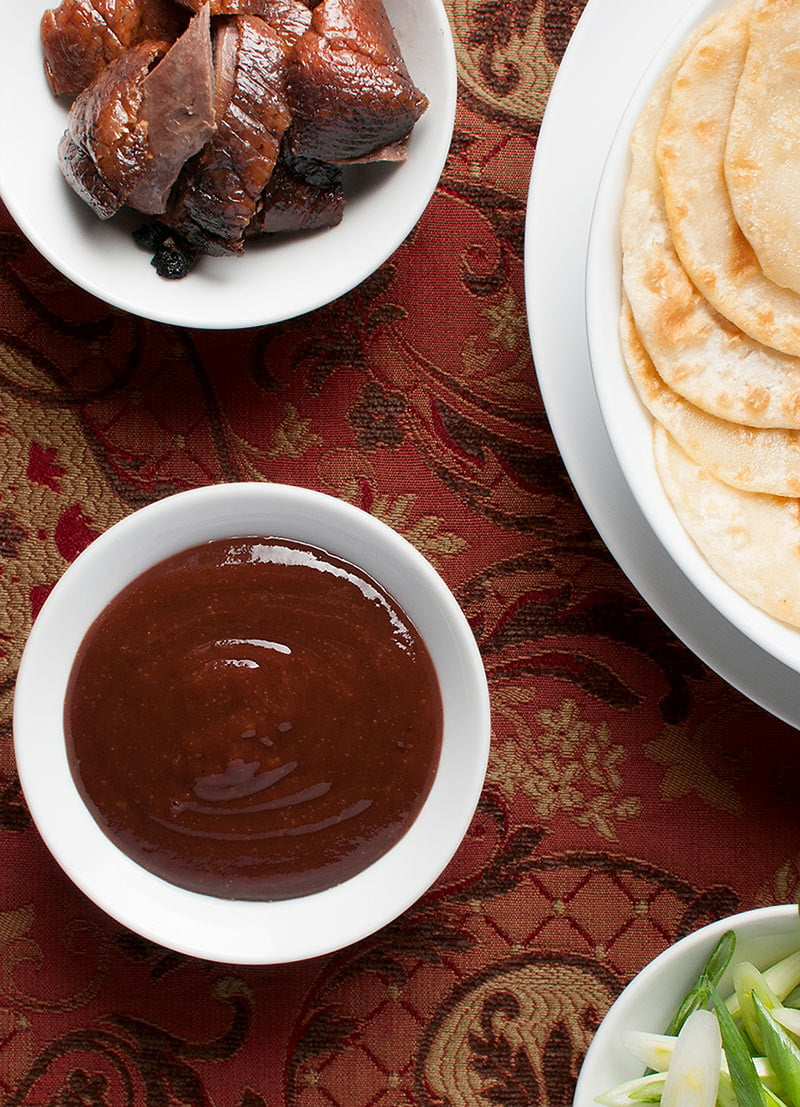
June is plum season in California… or at least the season for wild plums. Every year is of course a little different, but for us plum time is normally from mid-June until early July. It all depends on how hot it’s been, and whether or not our area has been blessed with late rains.
Almost every part of the United States has some sort of wild plum, or at least something similar within the larger prunus family, which includes things like peaches and cherries and apricots. Finding your very own wild plum trees can be something of a treasure hunt.
The easiest way to locate them is to scout in early spring, when the trees are in bloom. Why so early? You might think it’d be plenty easy to spot a plum tree loaded with so much scarlet fruit it looks like a Christmas tree.

It actually isn’t. Most wild prunus species are understory trees hanging out beneath larger hardwoods. A lot of them are actually more like woody bushes than proper trees. I’ve missed a great many of them even while searching, especially those with yellow fruits; yellow fruit blends well with green leaves.
I’ve written about foraging for wild plums before, taking special note of the suburban ornamental cherry plum, whose fruit is the color of a bing cherry and tastes almost as good. I like to make plum pies from them, and they also make a great infused vodka.
My advice is to take a walk around when the trees are in flower, which is February in NorCal. Look for the tell-tale prunus flower.
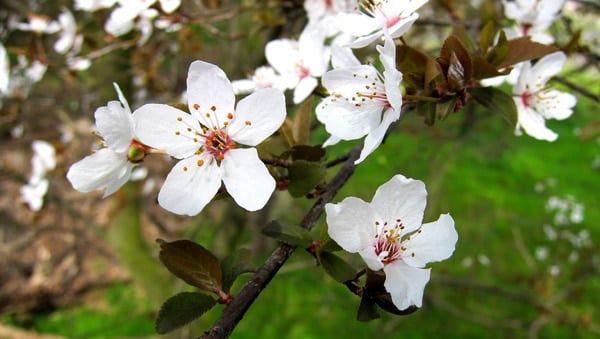
When you see flowers on trees that look like this, you are in business. Remember where the tree is, and you will be rewarded with some sort of fruit. I have a hard time telling apart plum flowers from wild cherries, pears or even wild apples. But they’re all good, so who cares?
Guard your trees. Everything and everyone wants to eat “your” plums, which of course aren’t actually yours. Once the fruit begins to color, check the patch frequently until most are sweet. They are supposed to be tart, by the way. If you wait until wild plums are as sweet and insipid as supermarket plums, you will be sad — because something will have already eaten them.
One of my patches, which shall remain nameless, is in an area you are not supposed to pick in. So when I harvest fruit in this area, it feels a little dirty and exciting: I sneak in when few people are around, pick as fast as I can, stuff the plums in my pack and nonchalantly exit said location quickly. Make eye contact with no one. Look casual. For some reason illicit fruit always tastes best.
As for the plums themselves, well, they are small and the fruit clings to the pit closely. So if you plan on doing something with them other than snacking, you will need to deal with hundreds of little pits.

My advice is to freeze the plums whole. Once thawed, the pulp softens dramatically and will slough off the pits easily.
Or you can use a cherry pitter for dealing with them fresh — but be sure to have a stout one, as these plums are a shade larger than cherries and will tax a weak pitter.
What to do with your plums? Pretty much anything you would make with domestic plums. Chinese plum sauce is one of my favorite ways to save the harvest. This homemade stuff kicks the crap out of that weak, overly sweet and flaccid supermarket variety.
Think of this as an über powerful Asian BBQ sauce.
Serve it alongside simple grilled meats, barbecued brisket, or as a dipping sauce for Peking Duck (or regular roast duck, for that matter). If you want to skip the meat, adding a thin layer on Chinese scallion pancakes is insanely good.
If you have some Chinese plum sauce around — this recipe keeps a long time in the fridge, and can be canned — you have a party in a jar… and nothing’s better than a party started with forbidden fruit.
Chinese Plum Sauce, with Wild Plums
Ingredients
- 3 pounds plums
- 4 garlic cloves, chopped
- 1 large shallot, chopped
- 2 tablespoons chopped ginger
- 1/4 cup soy sauce
- 2 tablespoons chile bean paste
- 2 teaspoons Five Spice Powder
- 1/2 cup rice vinegar
- 1 cup sugar
Instructions
- You will need to pit the plums sooner or later. If you are using domestic, freestone plums, cut them in half and pop out the pit. Most plums, however, have fruit that sticks to the pit. In this case, you can do one of three things: Use a cherry pitter to remove the pits; slice and cook, then strain; or freeze the plums whole to soften, then cook and strain. Freezing loosens the fruit's grip on the pit. Either way you will need some way to strain the pulp from the pits. I use a simple food mill.
- I cook the plums in two stages. In the first stage, I put just a little water in the bottom of a heavy pot and add all the plums. Turn the heat to medium and, once they are simmering a little, use a potato masher to squash them as they cook. Keep agitating the plums as you simmer them gently -- you will probably need to turn the heat down at some point -- until most of the flesh comes off the pits. This takes about 20 to 35 minutes.
- Move all the plums to a food mill. Pick out as many pits as you can right off the bat. Mill the plums into a coarse puree, removing pits as you go. This is actually really easy with domestic plums, as both the pit and the plum itself is larger than its wild cousin. Wild plums are only about the size of a large cherry, so this stage will take a bit longer with them.
- Once the cooked plums are free of pits, return them to the pot along with all the other ingredients. Simmer gently for another 30 minutes, until all the flavors are melded and the garlic, shallot and ginger have softened. Pour everything in to a blender and puree until smooth.
- Your plum sauce is now ready, and it will keep for about 6 months in a sealed jar in the fridge. If you want to keep it in the pantry, you will need to water-bath can it. Use clean jars and new lids and process for 15 minutes. My advice is to use half-pint jars, as a little of this sauce goes a long way. Once canned, the plum sauce will keep for a year or more in the pantry.
Nutrition
Nutrition information is automatically calculated, so should only be used as an approximation.
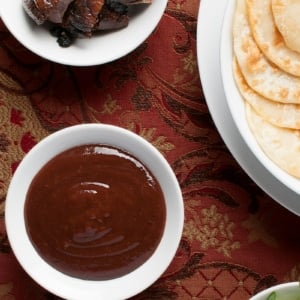
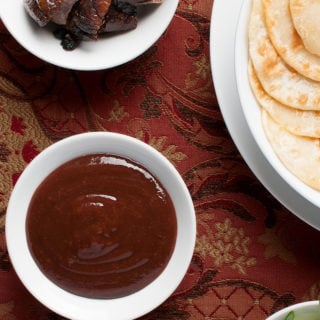
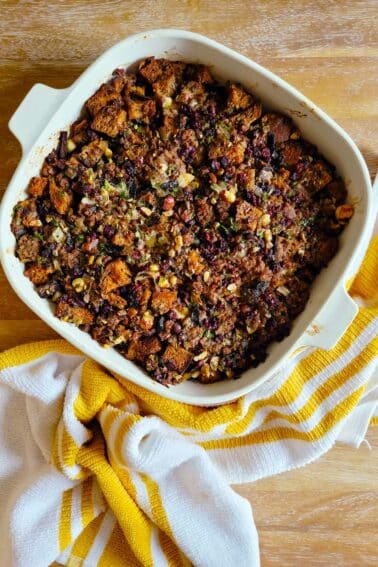
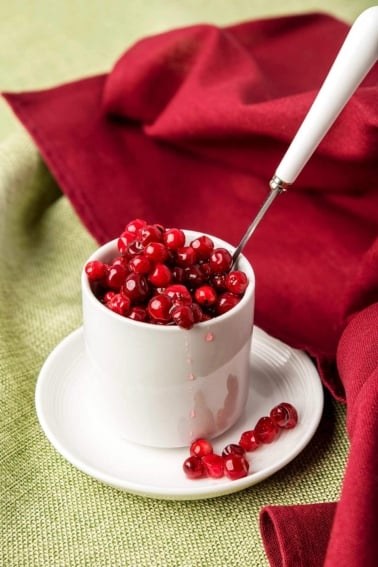
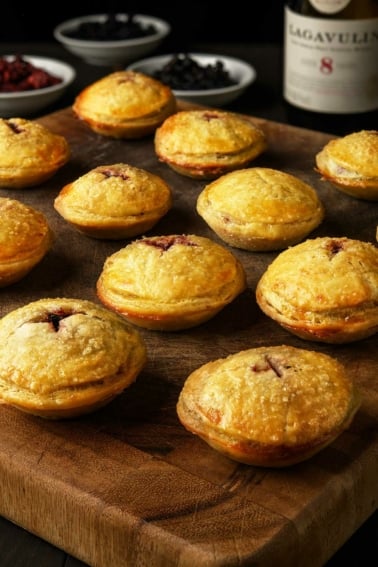

Can i freeze the sauce?
Cheryl: You bet.
Do I peel the skins off the plums as well as pitting?
Linda: I don’t.
I have a dwarf red plum tree which produces fruit with a metallic taste, especially if not very very ripe. Jam preserves or canned plums have this metallic taste too. I had the same problem with local wild plums. I use stainless steel pans, not aluminum to process. I live in northern Minnesota and we have very high iron content in our well water. Any suggestions?
Thank you.
Do I have to peel the plums or do I cook and purée everything with the skin on? I have commercial purple plums.
My thanks in advance for the clarification!
Grace: Nope, skins and all.
I cooked my plums w/ the pits in for hours mashing them as they cooked then string them. I just heard they were toxic w/ cyanide…does cooking them make that worse? I froze my cooked plums in hopes to make jam and plum sauce. Should I throw it out?
Patti: No. It makes them non-toxic. The cyanide compounds in the pits are heat volatile, so cooking removes them.
Just made a double batch last night from plums from a wild plum tree here in Washington state and the results were outstanding! I would say the worst part was separating the pits after the plums were cooked, otherwise the recipe is a snap.
This recipe is divine!
This is delicious ! So much flavor; I will definitely be using this recipe again
This is the second year running I have used this recipe to make my Plum Sauce. It is really tasty & much better than the shop bought version. This versatile sauce is yummy with any meats & can be used in stir-fries too. The 7 jars I have made this morning (doubling the recipe) will be all gone by Christmas!!
Thank you for posting!
The tool that looks like a conical strainer with three legs is called a “chinois” after the conical hat worn by the Chinese railroad workers in California in the 1800s. Great tool for canning. Used my Mom’s when I was a kid. Wish I had it now. That conical pestle made short work of crushing fruit or tomatoes.
Steve, do you have Mirabelles? I have heard they make fabulous liquere
Great taste and so like the real thing in a restaurant !
But i would add its much much easier to take out the stone before cooking if the plums are firm , we are in the South West of France in a region where the local plums are dried into Prunes and so if we go for a walk with our dogs at this time year are surrounded by free plums.
works well with Pork meat and soon i will be killing some Ducks and cant wait to try the sauce on some of that !
Joe: Nope, you’re good. The cyanide in the pits is heat volatile, so the boiling dissipates it. And then you strain out the pits, too.
I have read that plum pits contain a toxic cyanide compound and can be dangerous. I harvested a large amount of wild plums in Wisconsin and am planning on making this sauce but I am concerned about cooking down the plums to release the pits inside. Any idea if this will release the cyanide and make the sauce dangerous to eat?
Chris: The skins will always be tough on an ornamental plum, and they are supposed to be tart. The flesh of the plum should be a soft like a store-bought plum. Depending on where you live, they ought to be coming ripe between now and early July.
I have an ornamental plum tree in my front yard. Seems that the worms always get to them first; I supposed because I’m waiting for them to “ripen.” So, Hank, when is the plum ripe enough. Because they are tart and the skins are tough. But I’d really like to get them this year and make a jelly or a wine.
I harvest wild plums every year to make jams and pie fillings, and yes, the forbidden fruits are just a little bit more special!
Jeff, that cone-shaped, fine-mesh seive is called a “chinois”.
We get a lot of wild damsons in the UK, I wonder if I could use them in this recipe…..
In Texas they plant Mexican Plums along right of ways, in parks, public spaces, and office complexes. They are pretty drought tolerant. My current favorite office complex has 7 or so trees and that’s way more than I can use. They are pretty tart, not really “eating” plums so much and have a little thicker skin too. But the flavor is intense, my family has been putting up jelly and jam for years, it’s a favorite tradition to do the day after Thanksgiving.
And I get the illicit rush too when the security guard asks WTH are you doing on my property or if you’re picking them on the corner of a busy street or a bus stop. Nobody knows what to do with them anymore.
I use one of these when I make jelly, it’s not a ricer, but I can’t remember the french word for it-
https://compare.ebay.com/like/190852022348?var=lv<yp=AllFixedPriceItemTypes&var=sbar#
It’s good for squeezing out the juice, but the pits, pulp, and skin pretty much get stuck in the strainer. But I dont mash them in the pot first, that would probably help. Will give it a try.
I can’t wait until late September when the next crop comes in! Will give this recipe a shot. Do you think the tart variety will work?